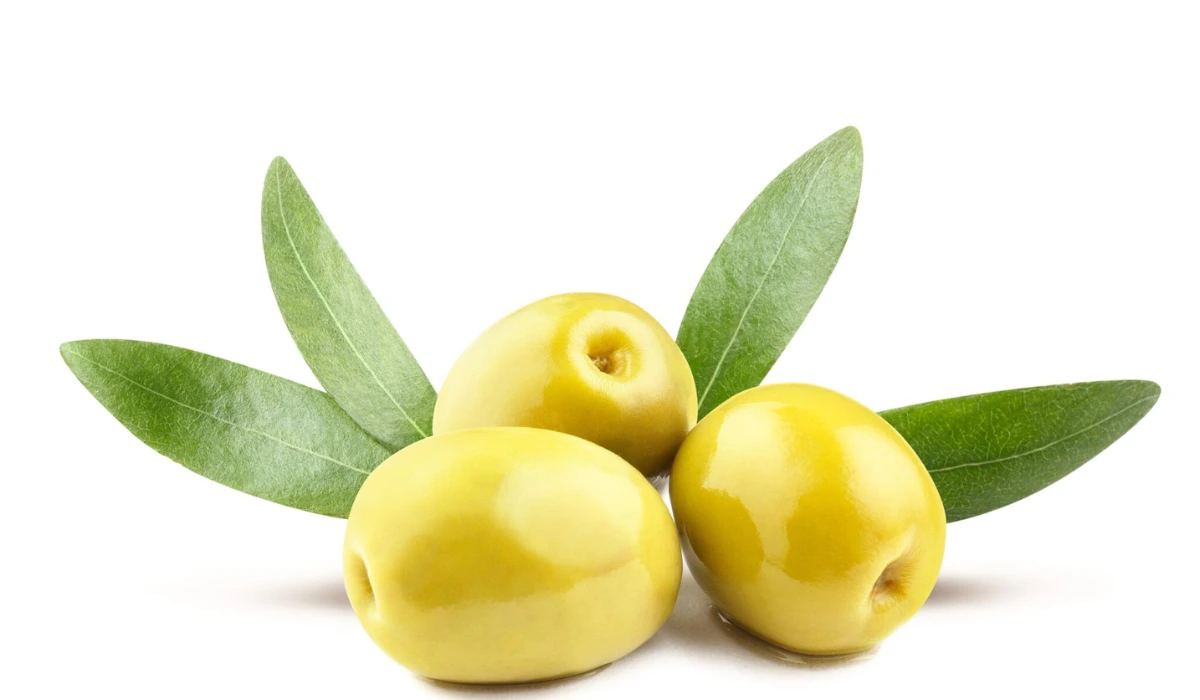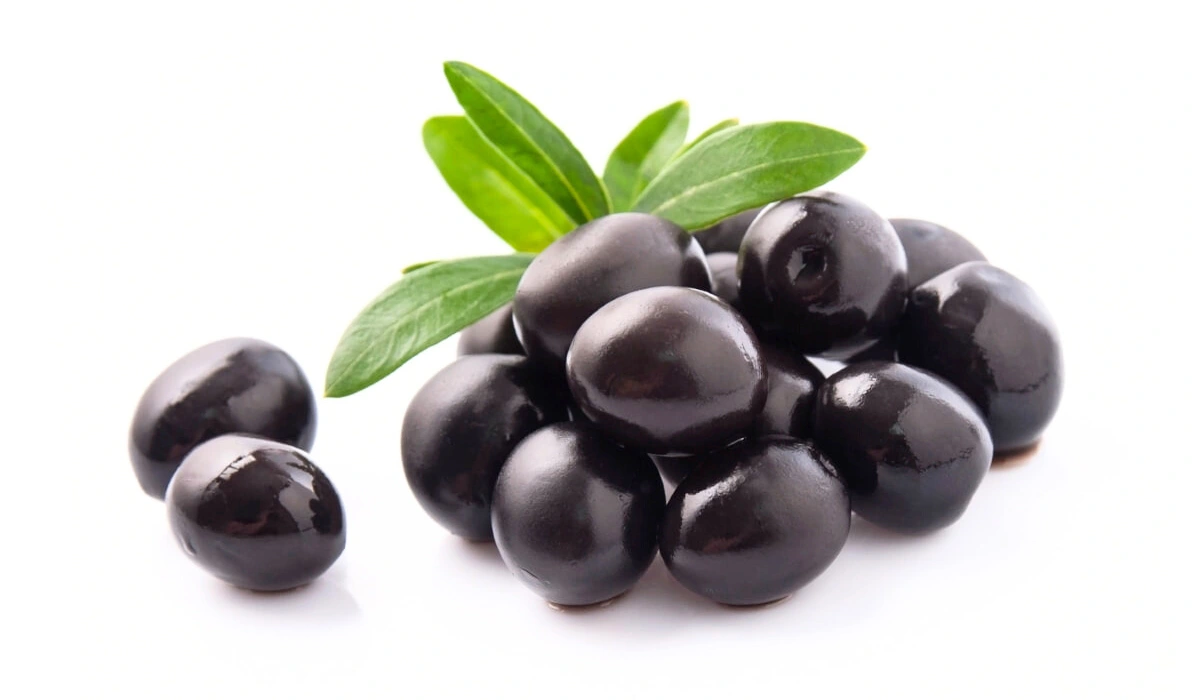The olive tree commonly grows in the Mediterranean region, and its scientific name is Olea europaea. Also, it is grown in other countries like Australia, New Zealand, and South Africa. Now, the olive tree is pretty famous for its fruit, but it is a big deal in agriculture because it is the source of olive oil.
Moreover, people harvest olive trees for different reasons: some for making oil, some for eating, and some for both. Additionally, some people get confused about different types of olives, such as green and black. Therefore, we will explore both green and black olives to clear up this confusion.
What Are Green Olives?

Green olives are young olives that have not fully ripened yet. Also, they are soaked in a special solution to remove their natural bitterness before being preserved. Moreover, these green olives are full of antioxidants, healthy fats, vitamin A, and vitamin E.
Additionally, you can also buy green olives that are stuffed with things like cheese and nuts. Furthermore, people use green olives to add savory flavor to dishes because they are salty. Interestingly, you can also eat green olives as a snack and add them to your salads.
What Are Black Olives?

Black olives are mature olives that have fully ripened on the tree. Also, they change color from green to various shades of dark (from light brown to deep dark). Moreover, black olives undergo a curing process after harvesting that can intensify their dark color even more. Additionally, black olives also contain some helpful nutrients like vitamin A, vitamin E, calcium, and potassium.
Interestingly, black olives come in different types, such as Kalamata olives and the Italian Gaeta olives. Furthermore, you can add black olives to salads and eat them as snacks just like green olives. Also, many people use black olives for pizza toppings and pasta dishes.
What Are The Differences Between Green Olives And Black Olives?
You can easily differentiate between both of these just by glancing at it because one has a green color while the other one can turn from dark purple to brown and even black shades. However, this is just a quick difference you can observe between green olives and black olives, but there are other things as well that keep them different from each other. So, let’s quickly understand the major differences between two of these healthy olives.
1] Amount of Nutrition
By having different colors, these olives keep a set of nutritious values inside. If we talk about green olives they contain iron, fiber, Vitamin E, healthy fats, and significantly more nutritional elements. On the flip side, black olives are also full of all these nutrients, but they lack higher antioxidants.
2] Taste And Flavor
Green olives are generally saltier than black olives because they have higher sodium content. Also, you may find green olives have a tangy and a little bitter taste, while black olives have a mild flavor. So, if you want to have sweeter olives, then you can go with the fully ripe black olives, and if you enjoy the bitter taste, then green olives would be the right choice.
3] Preservative Methods
As green olives are a little bitter, they are usually poured in salt water to preserve them. In this way, salt water decreases its bitterness by enhancing the flavor if it is soaked in it for a longer time. On the flip side, as black olives are sweet, they can be preserved in several ways, including salty water. More often, the black olives are preserved in an oil-based solution and vinegar solution.
4] Harvesting Methods
Yet another major difference between black and green olives is their harvesting methods. Farmers pick green olives from the trees before they reach their full ripeness. Further, before preserving green olives, they undergo fermentation in an alkaline solution that contains potassium hydroxide (KOH) and was traditionally made by mixing rainwater with wood ashes. In contrast, farmers allow black olives to fully ripen on the tree before harvesting them, and then they are cured right away without soaking them in an alkaline solution.
5] It’s Uses in Dishes And Other Foods
Green olives are often used in salads, making snacks, and a variety of dishes. On the other hand, black olives have wider uses in edible items such as stuffing into sandwiches, dressing salads, topping on snacks, covering the upper layer of cheesy pizza, and much more.
Also Read: Olive Oil For Skin: Benefits & Risks
Similarities Between Green And Black Olives
Green olives and black olives both come from the same fruit produced by olive trees. Also, you should know that when we talk about black or green olives, we are referring to the ripe and unripe versions of the fruit. Moreover, these trees are often found in the Mediterranean, parts of Asia, and some areas in Africa.
Additionally, one thing they share is the presence of antioxidants, which are good for preventing inflammation in the body. Also, both green and black olives are a regular part of the meals for people in the Mediterranean region. They use green and black olives to make different types of dishes daily. Furthermore, both green and black olives have a high amount of sodium but are low in cholesterol, which is good for your heart health.
According to some studies, if you use olives (both green and black) in your diet daily, then they can help you improve your heart health. The reason for this is both green and black olives contain healthy monosaturated fats and are low in cholesterol. Additionally, it doesn’t matter whether you are using green or black olives because both kinds of olives have a naturally bitter taste.
Final Words
Olives are very popular all over the world, and they are used for different reasons. Many people eat olives as snacks and add them to their salads. Also, many people use olives to make different types of dishes, especially in the Mediterranean region. Moreover, olives are used to make oil, which is also used in cooking and for skincare. However, some people get confused about green olives and black olives. Therefore, we have explored both green olives and black olives in detail.
Also, we have explained the main differences between green and black olives. Additionally, we have explained the similarities between green and black olives. Thus, choose what you like the most and use them according to your choices because both are beneficial for your health.

